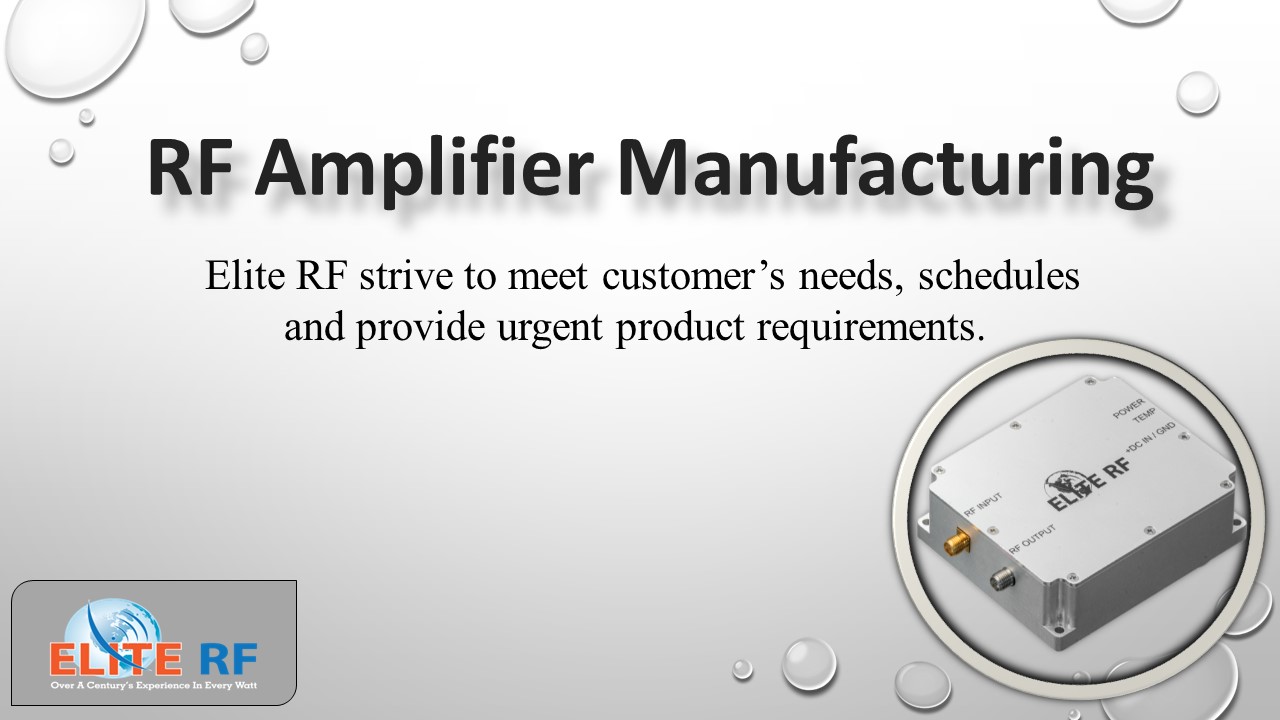The Low-Noise Amplifier Basics - PowerPoint PPT Presentation
Title:
The Low-Noise Amplifier Basics
Description:
The application of LNA is common in many types of wireless systems and RF Amplifiers. With appropriate specifications, you will have ideas about using it. Also, it can only serve your purpose when you fit it in the circuit design in the right order. However, certain steps are important to know at first. – PowerPoint PPT presentation
Number of Views:4
Title: The Low-Noise Amplifier Basics
1
RF Amplifier Manufacturing
Elite RF strive to meet customers needs,
schedules and provide urgent product
requirements.
2
The Low-Noise Amplifier Basics
A low-noise amplifier (LNA) follows the
transmission principle of a very low-power signal
without degrading its signal-to-noise ratio. Yes,
the use of low-noise amplifiers in the designing
of transmission or broadcasting systems is
common. Also, the design of this LNA is to
minimize the surplus noise. Yes, designers have
kept everything in their minds. Also, the Low
noise amplifier applications have additional
purposes. They just use a few components, circuit
topologies, and operating points to minimize the
extra noise. Specifications of an LNA The
application of LNA is common in many types of
wireless systems and RF Amplifiers. With
appropriate specifications, you will have ideas
about using it. Also, it can only serve your
purpose when you fit it in the circuit design in
the right order. However, certain steps are
important to know at first. Following
specifications of a low noise amplifier help you
to understand everything about it 1.Noise
factor and noise figure The noise figure can
be explained as the ratio of the total output
noise power and the output noise (which appears
because of the input). The source that causes a
noise holds a significant part to decide this
noise figure. Also, this noise figure points to
the quality of amplifiers. It specifies the noise
performance of an RF system too.
3
The Low-Noise Amplifier Basics
2. Noise spectral density The Noise Spectral
Density (NSD) is essential in different sections.
Yes, it offers several applications for the
amplification of tiny signals such as photonics,
nanotechnology, and quantum physics. Noise
characteristics of the systems have a different
representation. They come to yield the extra
weight of the sum between the PSD and other
instance noisy observations. 3. Additional
parameters Low Noise Amplifier has a few
additional parameters. They influence its
performance and optimize different activities. To
define the noise parameters linked with LNAs in
brief, you require considering a few
measurements. The use of the NF Uncertainty
Calculator identifies different factors that play
the role in the noise figure uncertainty. Also,
they facilitate the design work by deploying the
measurement of a device as per its
characteristics. Also, the specifications of such
devices come into play so well. 4. Gain The RF
Low Noise Amplifier has a typical supply of gain.
It delivers a power gain of 100 (20dB). Also, it
just decreases the signal-to-noise ratio by a few
margins i.e. 3 dB noise figure (NF). In the
primary phase, LNAs are concerned with a few
transmissions of weak signals that flow just
above the noise floor. However, they also take
their chances with the present larger signals
causing intermodulation distortion in the
circuit. If you want to know more about low
noise amplifier basic, the best option is Elite
RF!
4
Contact us
Address 2155 Stonington Avenue, Suite
217, Hoffman Estates, IL 60169. Phone
(1) 847-592-6350 Email
sales_at_eliterf.com Website
https//eliterfllc.com/

